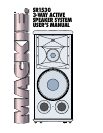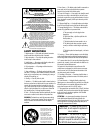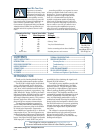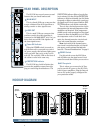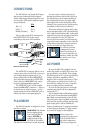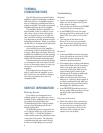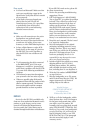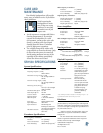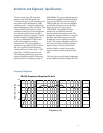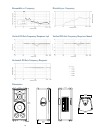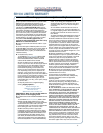6
THERMAL
CONSIDERATIONS
The SR1530 has three powerful built-in
amplifiers capable of producing a combined
500 watts of power. As amplifiers produce
heat, it is important to dissipate the heat as
quickly as possible. This results in increased
reliability and longevity for the amplifier.
The amplifier module is mounted on a
large heatsink, which is cooled by convec-
tion where cool air is drawn through it’s
fins, carrying the heat away. In order for
this convection cooling to work efficiently,
it is important to provide adequate airspace
behind the loudspeaker. When you position
the SR1530, we recommend leaving at least
six inches of air space behind it.
In the unlikely event of the amplifier
overheating, a built-in thermal switch will
activate, which mutes the signal. When the
amplifier has cooled down to a safe operating
temperature, the thermal switch resets itself,
and the SR1530 resumes normal operation.
If the thermal switch activates frequently,
try turning down the level control a notch
or two on the mixing console (or other sig-
nal source) to avoid overheating the
amplifier.
If the temperature in the room is too
high, it could cause the amplifier to over-
heat. In this case, you should try aiming a
fan at the rear panel to move more air
through the fins.
Troubleshooting
No power
• Our favorite question: Is it plugged in?
Make sure the AC outlet is live (check
with a tester or lamp).
• Our next favorite question: Is the
POWER
switch on? If not, try turning it on.
• Is the
POWER
LED on the rear panel
glowing green? If not, make sure the AC
outlet is live. If so, refer to “No sound”
below.
• The internal AC line fuse may be
blown. This is not a user serviceable
part. If you suspect the AC line fuse is
blown, please see the REPAIR section
next.
No sound
• Is the input
LEVEL
control for the input
source turned all the way down? Verify
that all the volume controls in the
system are properly adjusted.
• Is the signal source working (and making
union scale)? Make sure the connecting
cables are in good repair and securely
connected at both ends. Make sure the
output volume (gain) control on the
mixing console is turned up sufficiently
to drive the inputs of the speaker.
• Make sure the mixer does not have a
Mute on or a Processor loop engaged. If
you find something like this, make sure
the volume/gain is turned down before
disengaging the offending switch.
• Is the
PROTECTION
indicator lit red on
the rear panel? Make sure there is at least
six inches of free space behind the
SR1530.
Poor bass performance
• Check the polarity of the connections
between the mixer and the loudspeak-
ers. You may have your positive and
negative connections reversed at one
end of one cable, causing one loud-
speaker to be out-of-phase.
SERVICE INFORMATION
Warranty Service
If you think your loudspeaker has a
problem, please do everything you can to
confirm it before calling for service, includ-
ing reading through the following
Troubleshooting section. Doing so might
save you from being deprived of your
Mackie loudspeaker.
Of all Mackie products returned for ser-
vice (which is hardly any at all), many are
coded “CND” — Could Not Duplicate—
which usually means the problem lay some-
where else in the system. The following
troubleshooting tips may sound obvious,
but here are some things you can check:



